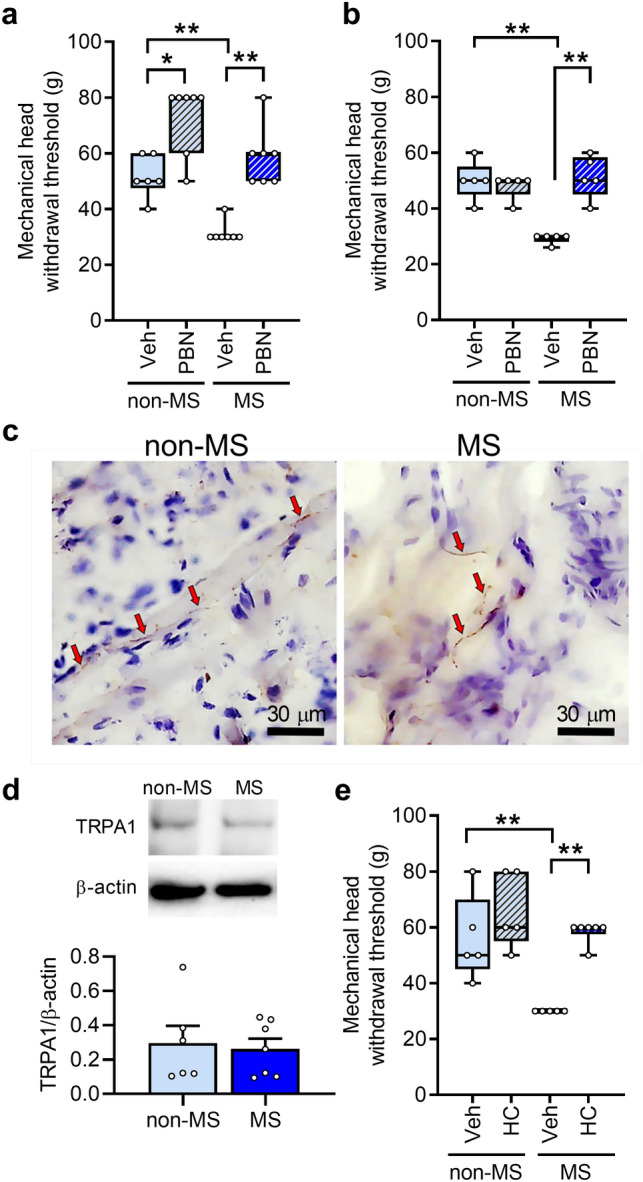Figure 3.

Involvement of reactive oxygen species (ROS) in mechanical pain hypersensitivity following maternal separation (MS). (a, b) Mechanical head-withdrawal threshold in the whisker pad skin following intraperitoneal (a) or subcutaneous (b) administration of the ROS scavenger N-tert-butyl-α-phenylnitrone (PBN) in non-MS and MS rats at 7 weeks (n = 6–7 in each group). *P < 0.05, **P < 0.01, Mann–Whitney U test. (c) Expression of transient receptor potential ankyrin 1 (TRPA1) in the whisker pad skin in the non-MS and MS rats at 7 weeks. Red arrows denote TRPA1-immunoreactivity. Scale bars indicate 30 µm. (d) Immunoblot for TRPA1 in the whisker pad skin at 7 weeks in the non-MS and MS rats (n = 6–7). P = 0.77, unpaired t test. (e) Mechanical head-withdrawal threshold in the whisker pad skin 30 min after intraperitoneal administration of the TRPA1 channel antagonist HC-030031 (HC) to non-MS and MS rats at 7 weeks (n = 5–6 in each group). **P < 0.01, Mann–Whitney U test.
